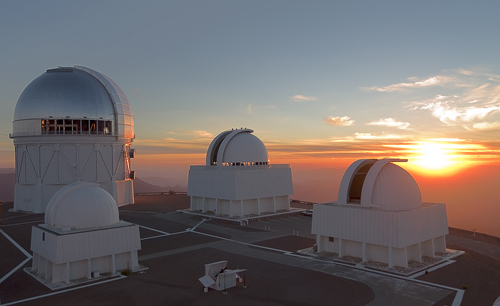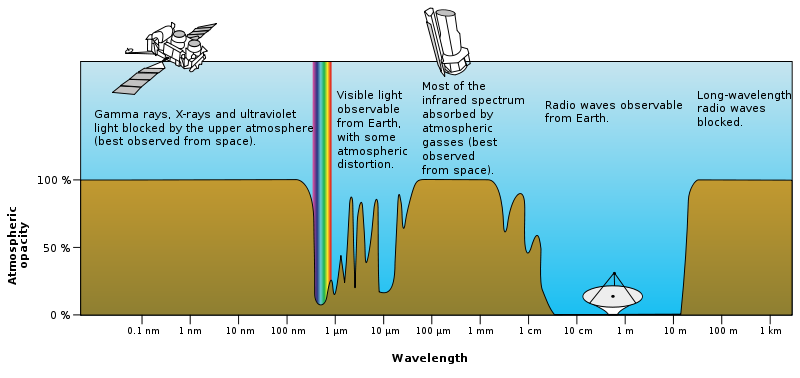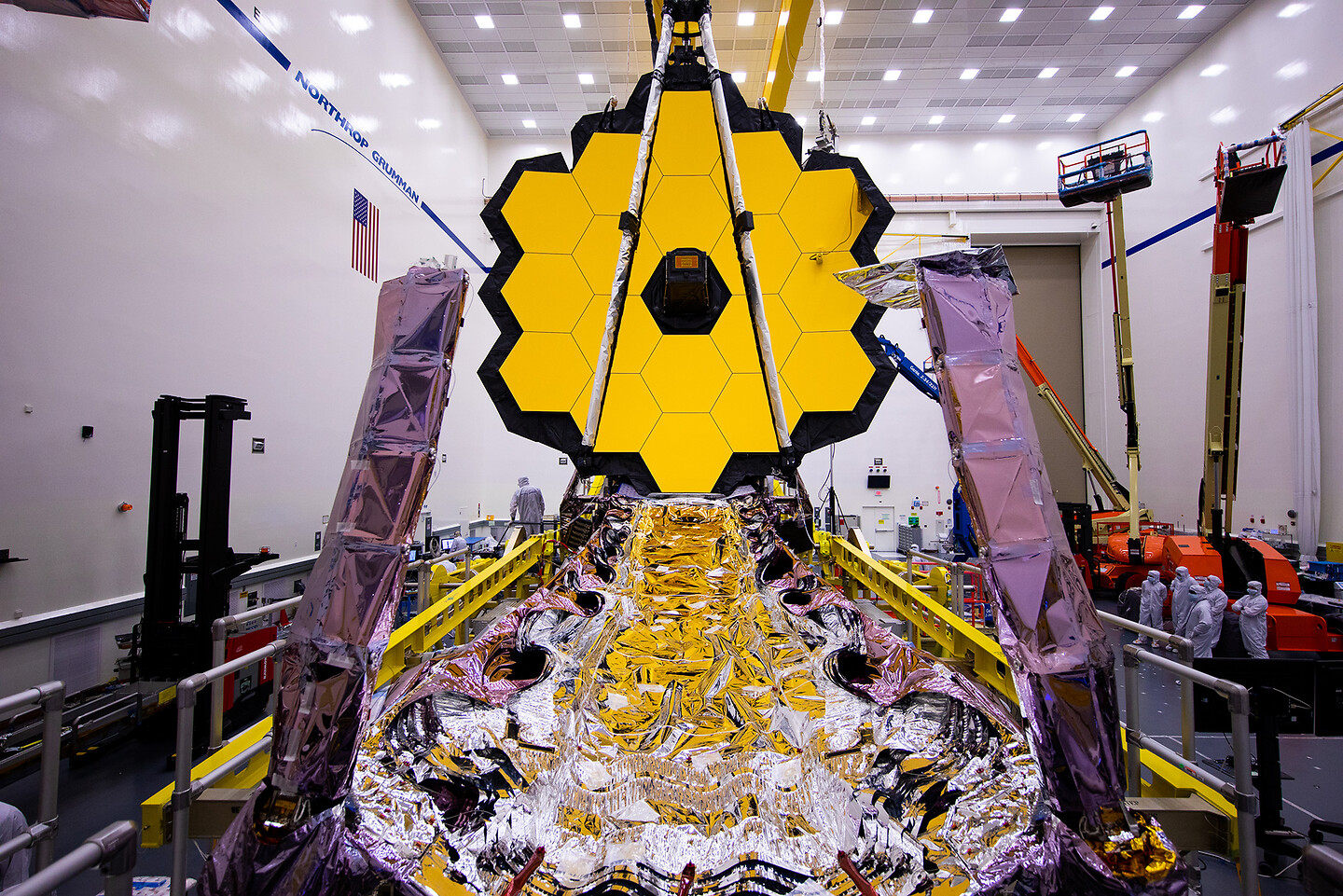 CTIO at sunset (NOAO/AURA/NSF) |
|
 CTIO at sunset (NOAO/AURA/NSF) |
|
Most observations of Celestial Objects are made using Optical Telescopes located at ground-based (e.g., Kitt Peak National Observatory, Cerro Tololo Inter-American Observatory, National Solar Observatory, ...) and space-based orbiting observatories (Webb Space Telescope). Optical light will be defined in a second. For now, take it to mean the type of light to which our eyes are sensitive.
A ton of information about the Universe has been gleaned from optical observations, however, much more can be learned if we consider more than just optical light [objects in the Universe produce many other forms of radiation. Collectively, the overall radiation phenomenon is referred to as Electromagnetic radiation (EM radiation). Until recently the complete EM spectrum was not utilized because

| Most types of EM radiation cannot penetrate the Earth's atmosphere and so do not reach the surface of the Earth. The major windows fall in the optical (visual portion) of the spectrum and in the microwave and radio portion of the spectrum. There are also windows in the IR. Fortunately for us, the gamma-ray, x-ray, and most of the UV is blocked by the atmosphere of the Earth shielding from these forms of high-energy electromagnetic radiation. |
Today, because we can place telescopes into orbit about the Earth, we are able to study stars across many portions of the EM spectrum and to get above the blurring effects of the atmosphere (the effects of seeing). The most spectacular of these missions is the Webb Space Telescope.
 |
|
We also study stars using the matter (particles) they produce, e.g., the Solar Neutrino Experiments studies the particle emission from the Sun (see Topic 1).
There are also experiments designed to detect the gravitational radiation from compact stars and other Celestial Objects.
The opening up of the EM spectrum and the study of other forms of Celestial emissions have substantially enhanced our understanding of Celestial objects of all kinds.